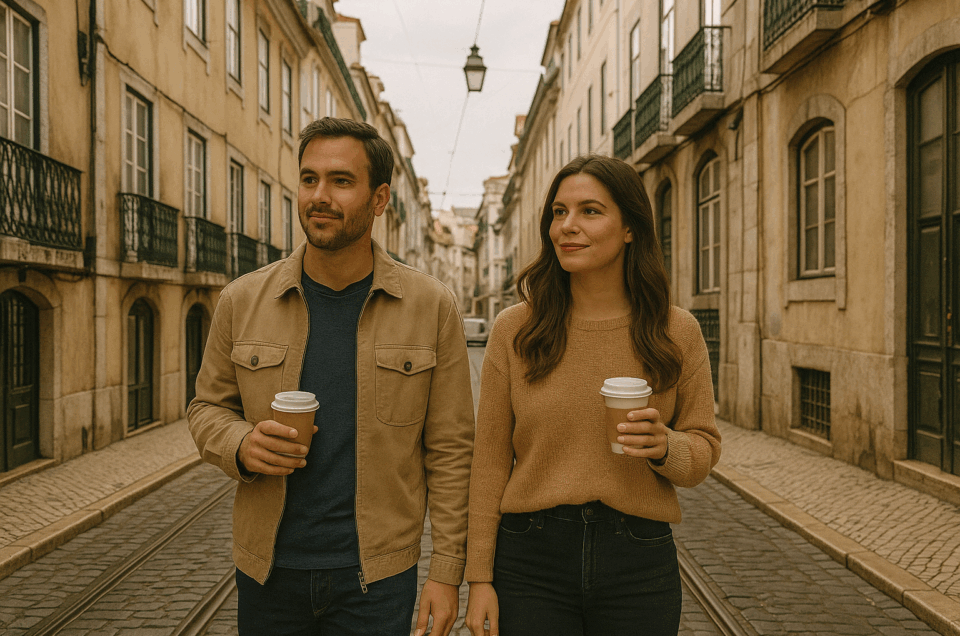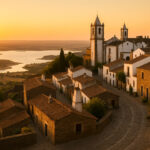Coffee in Portugal isn’t just a morning ritual—it’s a cherished cultural experience. Whether you’re sipping espresso at a corner café in Lisbon or enjoying a quick break in a tiny village in Alentejo, you’ll find that locals take their coffee seriously.
But for travelers, navigating the Portuguese coffee scene can be surprisingly confusing. Ask for a “coffee,” and you might end up with something very different than expected. Here’s a simple guide to ordering coffee in Portugal like a local—and avoiding awkward surprises at the counter.
1. Don’t Ask for an Espresso
While what most people drink is essentially an espresso, locals rarely call it that. Instead, ask for:
-
Um café – This is the standard small, strong espresso. It’s served in a tiny cup, often with a sugar packet.
If you simply say “café,” this is what you’ll get. It’s Portugal’s most common coffee order.
2. Want It Milder? Ask for a “Meia de Leite”
If you prefer something with milk, similar to a latte or café au lait, ask for:
-
Uma meia de leite – Literally “half milk.” It’s served in a larger cup or glass and contains half milk, half coffee.
It’s smooth, comforting, and ideal for leisurely mornings.
3. Need a Bigger, Milkier Coffee? Try a Galão
If you’re craving something more like a cappuccino or a lighter coffee to sip slowly, order:
-
Um galão – Served in a tall glass, it’s mostly milk with just a shot of coffee. Great for breakfast, especially with a pastry.
Just note: many locals consider it a morning-only drink.
4. Want It Without Caffeine? Say “Descafeinado”
Portugal has excellent decaf options, and they’re commonly available.
-
Um descafeinado – A decaf espresso, typically served like a regular café.
You can also order a meia de leite descafeinada or galão descafeinado if you want milk with it.
5. Like It Cold? Iced Coffee Is Not Common
While iced lattes and cold brew have become trendy in major cities, don’t expect them to be widely available across Portugal. If you want cold coffee, your best bet is to visit modern cafés in Lisbon or Porto that cater to international tastes—or speak with your guide, who can find a hidden gem that serves it.
6. Standing vs. Sitting: It Changes the Price
In many traditional cafés, standing at the counter (balcão) is cheaper than sitting at a table—sometimes by €0.20 or more. It’s not a tourist trick—it’s part of the system. Want to drink like a local? Stand at the counter, have a quick espresso, and move on with your day.
7. No Takeaway Culture
While takeaway coffee is increasingly available, it’s still not deeply ingrained in Portuguese culture. Coffee is something to be enjoyed on the spot—often with a pastel de nata or a friendly conversation. If you need coffee on the go, ask for:
-
Café para levar – Coffee to go.
Bonus Tip: Don’t Ask for a “Double Shot”
Portuguese coffee is strong. If you want something more intense, ask for a café duplo (double espresso), but be prepared—it’s potent and rarely ordered.
What Our Guests Say:
“We loved the café culture in Portugal—our guide explained all the differences and even took us to his favorite local spot in Coimbra. It was the best coffee of the trip, and not a tourist in sight.”
– Emily R., Chicago, IL
Exploring Portugal’s culture is all about slowing down, paying attention to detail, and immersing yourself in everyday moments—like ordering the perfect cup of coffee.
With a local guide by your side, you won’t just visit Portugal—you’ll truly live it.
Book your private journey today:
-
Discover our best-selling multi-day private tours across Portugal: https://portugal-magik.com/multi-day-tours/
-
Submit your preferences using the form below
-
Chat with us on WhatsApp: https://wa.me/18884955099
-
Or speak directly with our team: (844) 923-2100




